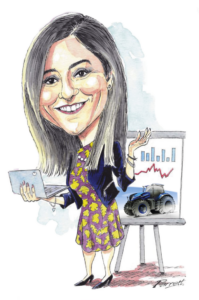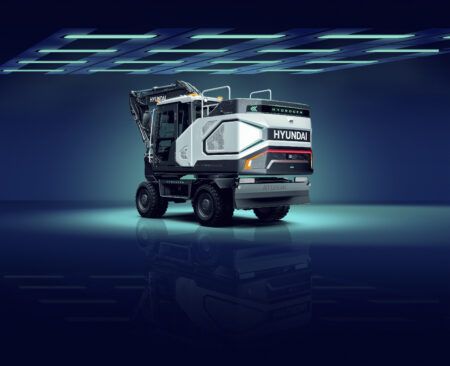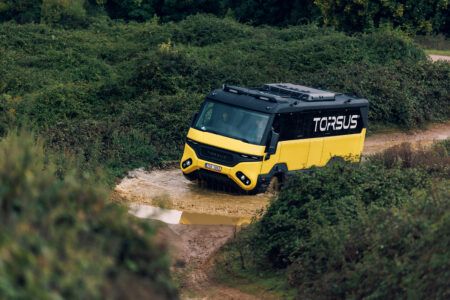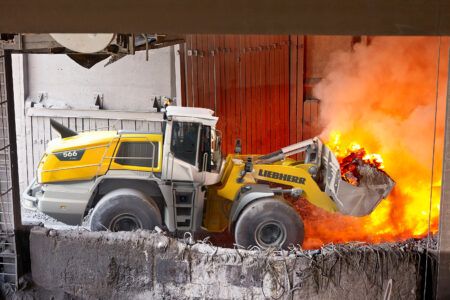The agricultural industry is one of many sectors harnessing the power of AI. From increased profitability to enhanced productivity, this new technology has the potential to revolutionise farming, says Professor Francesca Protano, head of R&D technology strategy and competence centres, CNH Industrial
 How many times in our everyday lives do we say, “I’ve only got one pair of hands” or its counterpoint “if only I had another pair of hands.” This is something that I often hear from farmers. It’s not even just hands, if they had multiple pairs of eyes and ears their jobs would be that little bit easier. If you’ve never sat in a tractor in a field of high-value vegetables, take lettuce for example, you might be surprised to know that there are barely centimetres that separate hulking cultivators and weeders from the whiffling rows of these delicate and pristine leaves. Then when you throw into the mix a diminishing pool of skilled agricultural labour things start to get tricky – and supermarkets are certainly not looking for pre-chopped salad direct from the field.
How many times in our everyday lives do we say, “I’ve only got one pair of hands” or its counterpoint “if only I had another pair of hands.” This is something that I often hear from farmers. It’s not even just hands, if they had multiple pairs of eyes and ears their jobs would be that little bit easier. If you’ve never sat in a tractor in a field of high-value vegetables, take lettuce for example, you might be surprised to know that there are barely centimetres that separate hulking cultivators and weeders from the whiffling rows of these delicate and pristine leaves. Then when you throw into the mix a diminishing pool of skilled agricultural labour things start to get tricky – and supermarkets are certainly not looking for pre-chopped salad direct from the field.
It is these types of meaty problems that me and my team get our teeth into in the R&D strategy team. One way we are looking to solve such issues is by using AI. I am a self-confessed AI evangelist and nerd. Perhaps, however, when we think of AI we tend to think of internet shopping algorithms trying to sell us stuff, ChatGPT writing our children’s assignments or even how targeted ads show up on our social media feeds. Yet AI is at the cutting edge of today’s agriculture, making a real difference to farmers and by extension to all of us. If AI can help farmers get more out of every square inch of field – in effect become a true partner or second pair of hands, eyes or ears – they can feed more people. And that can only be a good thing.
“AI is at the cutting edge of today’s agriculture, making a real difference to farmers and by extension to all of us”
AI in action
Here at CNH, we are significantly investing in AI ourselves, but we are also working with partners who are experts in this area. One such example is our work with Stout, a US-based company that develops smart implements. More precisely, Stout has developed a software-controlled implement for tractors that uses cameras, AI and proprietary vision technology to distinguish crops from weeds. Once identified, the implement simultaneously cultivates crops and removes weeds. It can even distinguish between different crops by only targeting those selected. High value vegetable farmers are often early adopters of disruptive tech. The application may be niche, but they are incredibly demanding in terms of performance.
Revolutionising farming
The benefits here are threefold and, as with most AI, fall into three main buckets. Firstly, productivity and profitability. Simultaneously cultivating and weeding saves time, money and fuel, as well as the resultant sustainability benefits. The second set of benefits fall under safety and accuracy. High-value crops are protected as the cultivator can tell the difference between a weed and a lettuce, in this example. Last but not least, there are major personal benefits. AI helps overcome a lack of skilled labour and makes these arduous tasks easier. In fact, when AI is working at its best, the operator will hardly even notice that it is there. What’s more, all this data is saved in the cloud meaning the more the system works the smarter it gets.
This is just one example, but AI has the ability to revolutionise farming. It will not look the same in every country, farm or even field, but AI is a key area of interest not only for CNH but for agriculture more broadly. There are so many niches to be exploited and large OEMs, such as CNH, are not only augmenting their product portfolios, but they are also partnering with specialist companies as we have done with Stout. This injection of capital know-how and global reach will also help fund, inform and drive the next generation of agriculture AI pioneers.
This article was first published in the August issue of iVT International – https://markallen.mydigitalpublication.co.uk/publication/?m=63192&i=827328&p=1&pre=1&ver=html5





